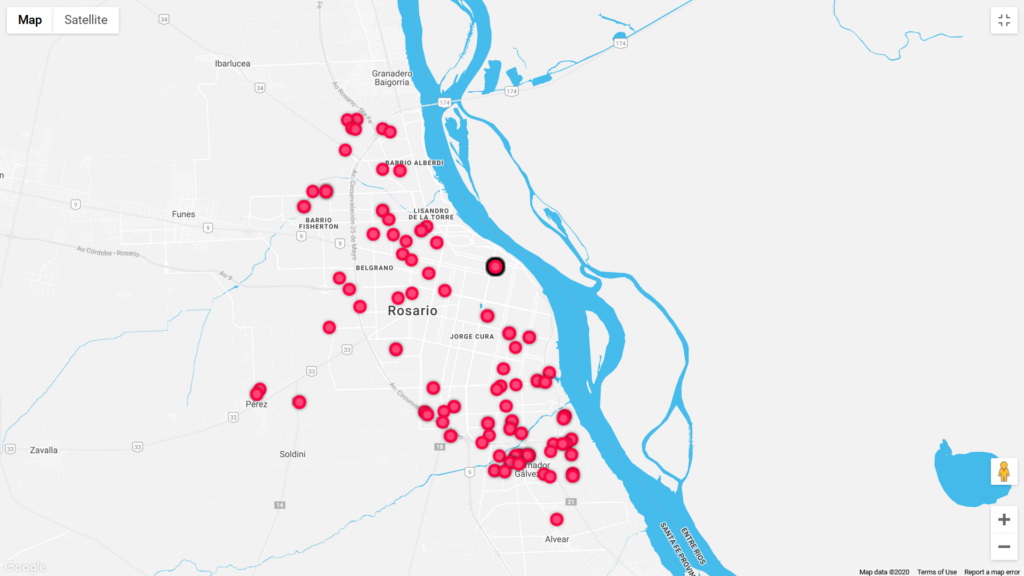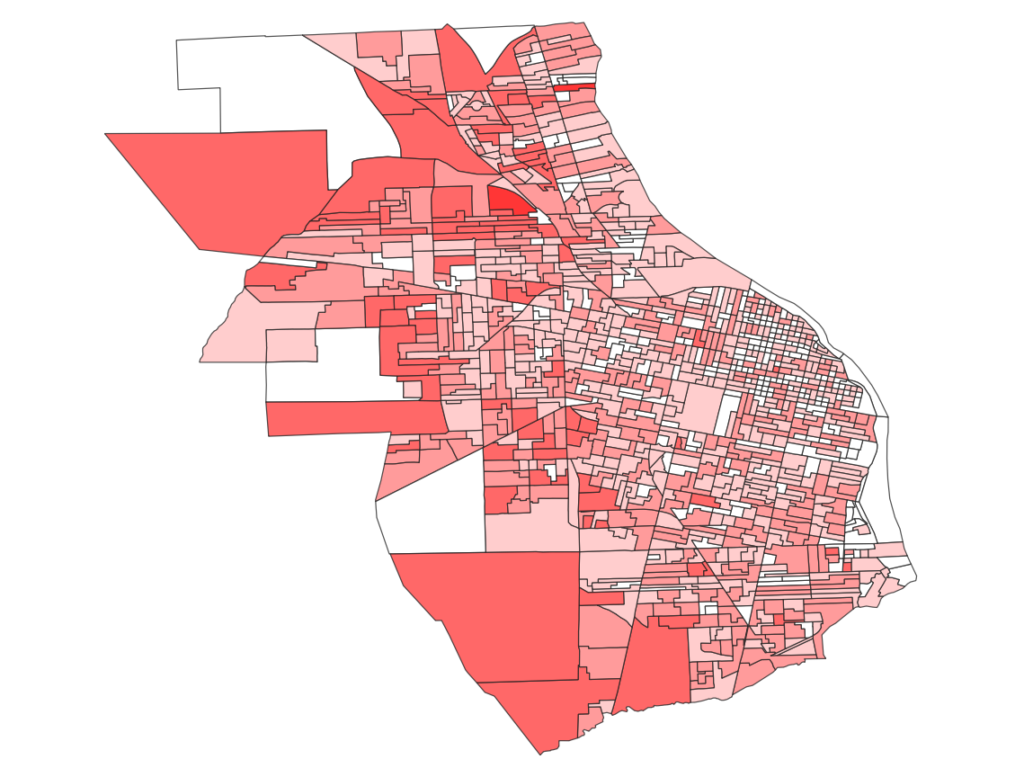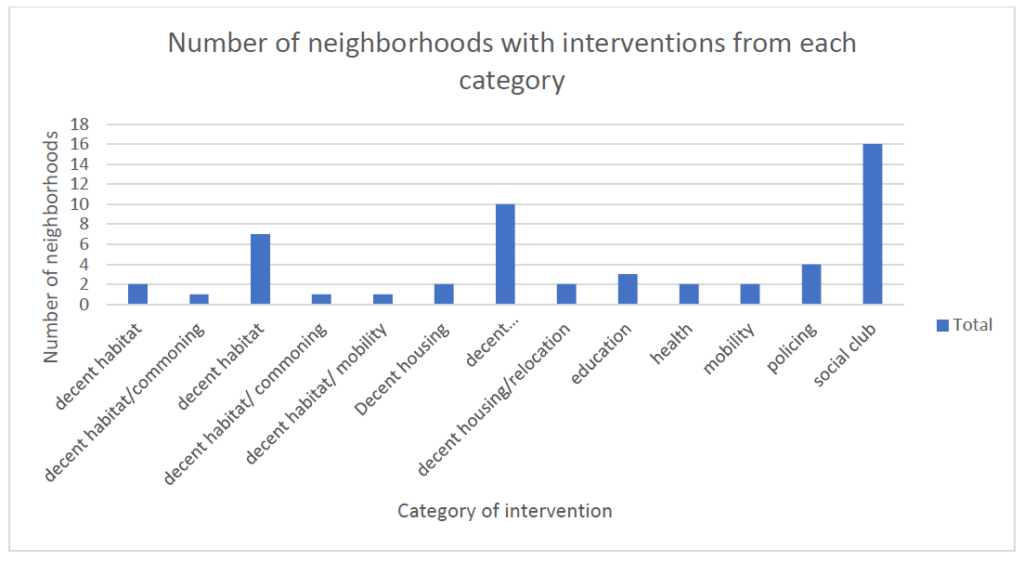Miranda presented the method of inductive visualization as her last participation to the group work. Her generosity in sharing the method with us reflects the sense of care we had decided to locate at the center of the group dynamic.
From that presentation, I decided to focus on the narrative of Plan Abre trying to categorize the actions and goal through the dichotomy oppression/liberation. What seems to be reinforcing oppressive logic? What on the contrary might support liberation? It allowed me to analyze the action of the state – and in this case at several scale and through different institutions – and to look more carefully at its contradictions.
It also allowed me to think further about the permanent tension around sovereignty and self-determination, as discussed several times during the semester. Sovereignty as used by the Nation-State might legitimate the development of certain activities with some kind of impunity. Sovereignty used by organized groups of people fighting for liberation has a different meaning, closer to self-determination. This contradiction is linked to the notion of absence-presence that all of us have been considering in our cases: the state exists as much as it doesn’t. In La Razon Neoliberal, Veronica Gago speaks about the so-called “informal settlements” (from now on I will refer to them as they are called in Argentina by its inhabitants, villas) as places where State sovereignty is expressed through “exclusion by inclusion and inclusion by exclusion”. These territories have a special place in terms of absence-presence of sovereignty. In that sense, we have to think about State sovereignty as the capacity of the State to organize or disorganize people in a specific place. A possible reaction – so frequently referred to as resistance – could be understood as an intent to build a people sovereignty, understood here as we explained before as self-determination.
To go back to my case, what does the State try to organize in the targeted neighborhoods and villas? How does it try to organize or disorganize people? How does it include and how does it exclude? Do the inhabitants of the villa feel that they have agency in the process? How do they organize to feel some sense of self-determination?
The Plan Abre has been organized around 4 goals:
- Improve the quality of life in the neighborhoods through the creation of strategic infrastructure linked to habitat improvement, local equipment, sanitation, access to safe water and electricity.
- Strengthen social networks of the neighborhood promoting encounter, participation and coexistence in the public space, as strategies to prevent violence and guarantee citizen security (la seguridad ciudadana)
- Impulse the constitution of Neighborhood Roundtables as spaces for citizen participation and dialogue with local and provincial authorities, in order to prioritize the problems to be addressed.
- Approach the families from an integral perspective ensuring access to fundamental rights.
These goals have been materialized through 3 axes of intervention: i) Infrastructure and habitat; ii) coexistence and participation; iii) Abre Family. Infrastructure and Habitat is explained as seeking “to build a better accessibility, to connect the neighborhoods to the urban grid, to recover and recondition strategic public spaces and organizations and social institutions’ buildings”. Coexistence and participation actions are defined as promoting strategies to inhabit public space with collective activities. Abre Family is aiming at ensuring access to rights such as identity, social protection, education, health, work, culture, habitat and decent housing.


By contrasting these 2 maps, we can observe what territories the State is trying to reorganize. Indeed, most of the Plan Abre interventions are located within areas that are characterized by high level of unsatisfied basic necessities. A household is considered to have unsatisfied basic necessities if presenting the combined following characteristics: indecent/precarious housing, no bathroom, overcrowded household, children between ages of 6 and 12 not attending school, head of household with low level of education. Are these interventions targeting the specific basic necessities of the inhabitants through its “integral approach”?
In order to try and visualize the kind of intervention through a lens based on the tension between liberation and oppression (to reflect logic of carceral or abolition geographies) based on different understanding of the meaning of those interventions, I did a survey of all the actions developed or planned within the territory of Rosario. Even though the Plan Abre is supposed to rely heavily on the inhabitants’ participation, there is actually very little information regarding the process of definition of the interventions.
It is a very arbitrary and incomplete process. Indeed, while certain kind of interventions such as the one aiming at creating infrastructure to evacuate rainwater seem to really improve the life quality of the inhabitants and would hence be categorize as liberating, other are much more contradictory. It is for example the case of the interventions defined as “Safe Light” (Luz Segura – which names relates directly to the concept of security). In these cases, the State plans the extension of the electric grid in order to provey formal electricity to neighborhood that generally rely on “pirate connections”. However, this means that the inhabitants will have to pay the service, which is in many cases a source of economic stress. The electricity company, owned by the Provincia, generally implements a social fare, a fixed fare, supposed to be “affordable’ for the families living in the villas, in order to promote formal connections. While studying the interventions, I discovered that for those territories, the formal connections and social fare were tied to a limit of use: the household are equipped with a regulating device: if they use more electricity than what they are allowed to at a certain time, the power is shut down until they decrease their consumption. The household is supposed to be able to use one stove, an electric heater, a TV, a refrigerator and the basic lighting of the home. What if they need more devices? These household are generally numerous, so system seems to enter more in a policing logic than a liberating one – indeed through the pirate connections, the inhabitants did not have to limit their consumption.
In other cases such as the creation of a police precinct or in the case of the creation of the Territorial Complaint Centers, “designed to establish a more direct relationship with the community to guarantee the effective exercise of their rights and facilitate the access of citizens to the relevant public institutions. The general objective is to contribute to the timely handling of complaints for illicit acts, contraventions, or other procedures and certifications. The centers work in coordination with a Specialized Police Force” (Provincia de Santa Fe). In both cases, the definition of security does not necessarily seem to correspond to safety or life improvement for the inhabitants but rather of control of determined territories. Both of the centers planned as part of the Plan Abre are located in villas, were the basic necessities are highly unsatisfied.
Keeping in mind those contradictions, I tried to organize the interventions in 3 axis divided in different categories, knowing that reality is more blurry and contradictory:
| Liberation | Oppression |
| Education | Commodifying |
| Health | Privatizing |
| Social clubs | Relocating |
| Commoning | Policing |
| Decent habitat | Controlling |
| Decent housing | |
| Mobility |


Many new questions emerge.
How does the consolidation of a street increase the community engagement towards its members? Does the connection to the water/energy grid imply more connectedness to the rest of the city? Who is more connected and whith what result? How much do the inhabitants participate to the definition of the interventions, and how do they feel about them? How can we analyze their feeling of self-determination over their neighborhoods? How can we visualize those elements?


